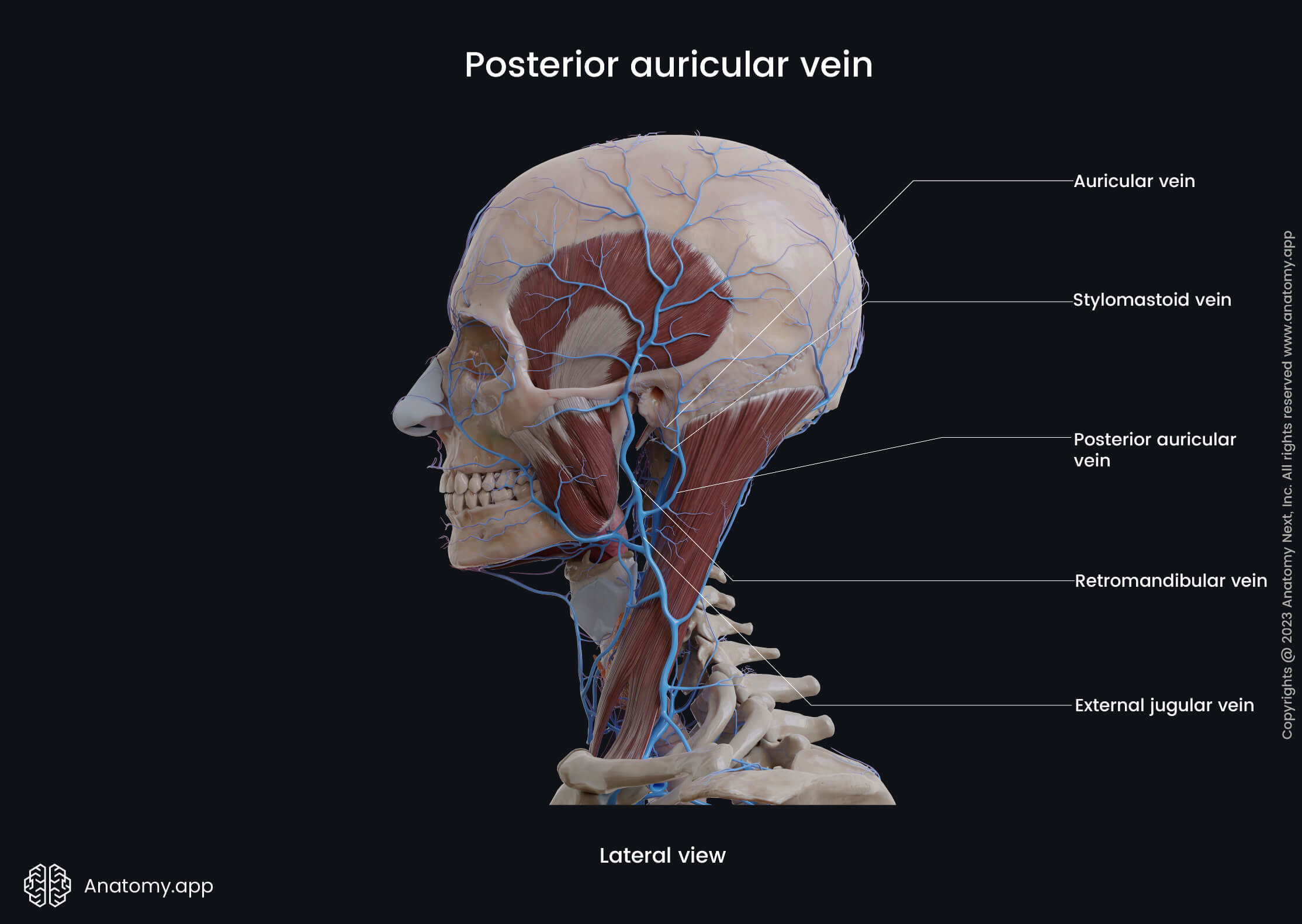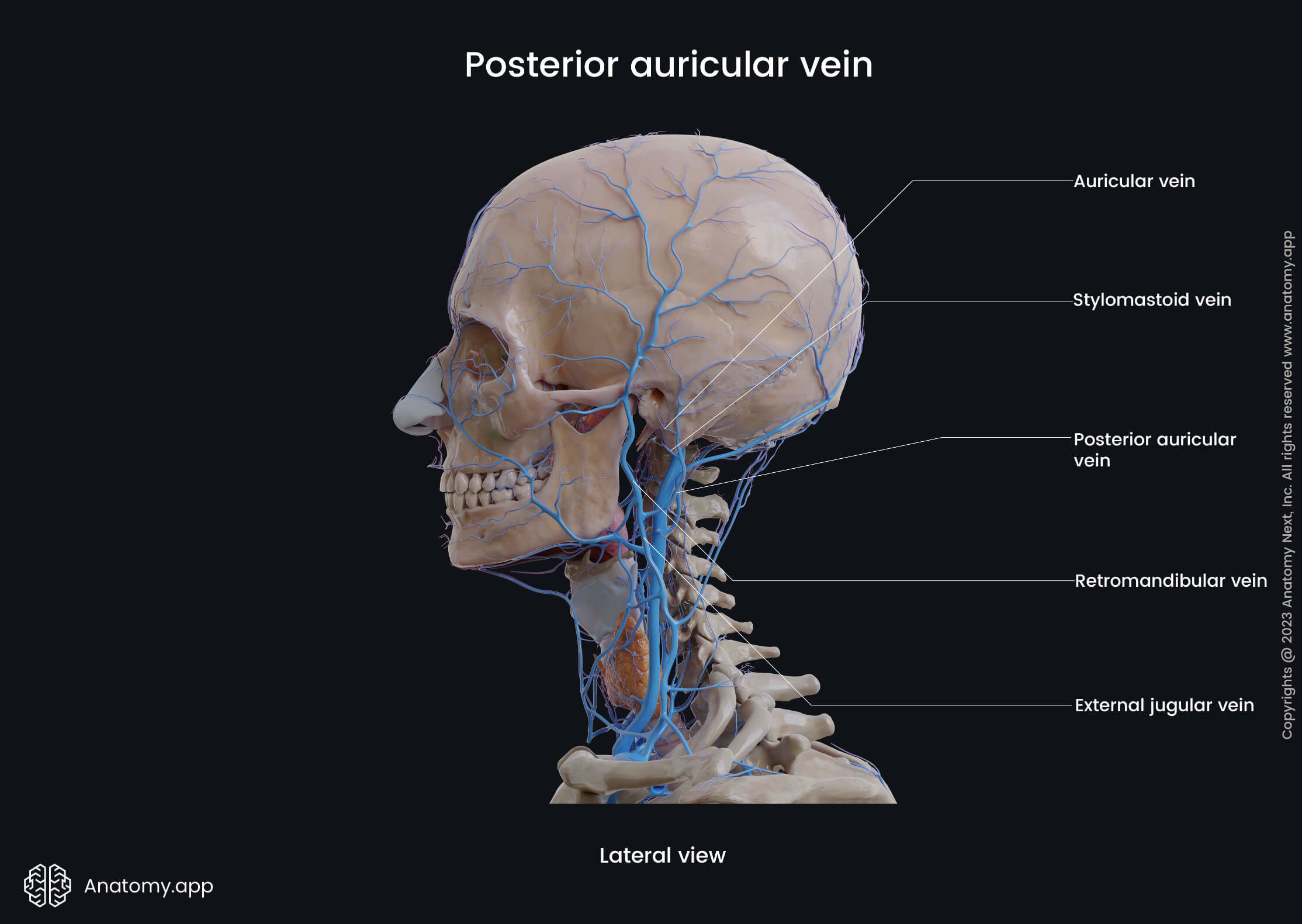- Anatomical terminology
- Skeletal system
- Joints
- Muscles
- Heart
- Blood vessels
- Blood vessels of systemic circulation
- Aorta
- Blood vessels of head and neck
- Arteries of head and neck
- Veins of head and neck
- Veins of head
- Extracranial veins
- Intracranial veins
- Veins of neck
- Veins of head
- Blood vessels of upper limb
- Blood vessels of thorax
- Blood vessels of abdomen
- Blood vessels of pelvis and lower limb
- Blood vessels of systemic circulation
- Lymphatic system
- Nervous system
- Respiratory system
- Digestive system
- Urinary system
- Female reproductive system
- Male reproductive system
- Endocrine glands
- Eye
- Ear
Posterior auricular vein
The posterior auricular vein (Latin: vena auricularis posterior) is a blood vessel formed by the parieto-occipital venous network. This vein collects venous blood mainly from the skin behind the ear.
The posterior auricular vein passes downwards posterior to the auricle and anterior to the parotid gland. The vein joins the posterior division of the retromandibular vein to form the external jugular vein or drains directly into the external jugular vein. The main tributary of the posterior auricular vein is the stylomastoid vein.

